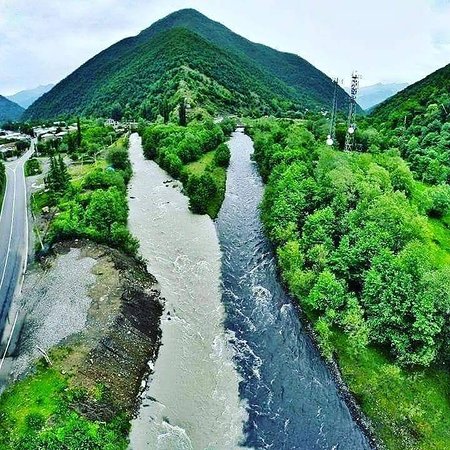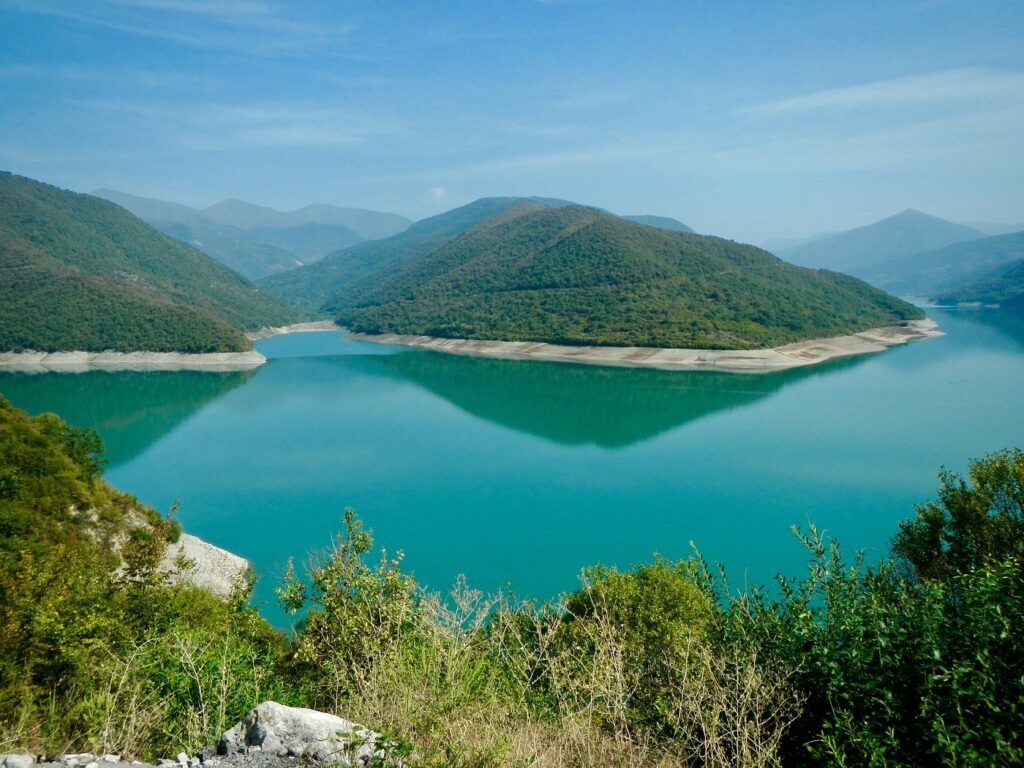
In the heart of Georgia, nestled amidst the lush greenery of the Caucasus Mountains, lies a remarkable natural phenomenon: the confluence of the Black and White Aragvi rivers. These two contrasting waterways, named for their distinct colorations, meet but do not mix, creating a breathtaking spectacle that has captivated visitors for centuries.

The Black Aragvi, originating from the volcanic mountains of Pasanauri, carries a rich sediment load that lends its waters a dark, almost inky hue. In contrast, the White Aragvi, emerging from the snow-capped peaks of the Khevsureti Range, boasts a crystal-clear, shimmering flow.

As these two rivers converge near the town of Pasanauri, their waters remain separated, forming a visible boundary that defies explanation. The reason behind this phenomenon lies in the contrasting properties of the two rivers. The Black Aragvi’s denser, sediment-laden waters tend to sink beneath the lighter, clearer waters of the White Aragvi. This creates a thin layer of resistance, preventing the two rivers from merging completely.


Further south, at the Jinvali Reservoir, the combined waters of the Aragvi continue their journey towards the Mtkvari River, the ancient capital of Georgia. From the Jvari Monastery, perched atop a hill overlooking the confluence, one can witness the mesmerizing panorama of the two rivers intertwining yet remaining distinct.


The Black and White Aragvi rivers stand as a testament to the enduring beauty and diversity of Georgia’s natural landscape. Their unique confluence serves as a reminder of the power of nature’s forces, shaping the land and creating wonders that continue to inspire awe and admiration.

Leave a Reply